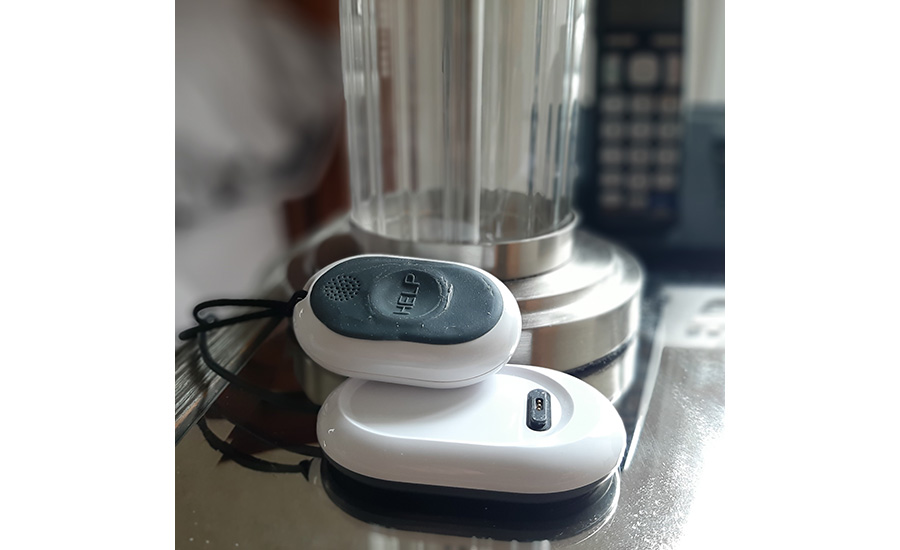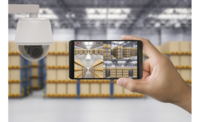The convergence of new technology and a booming generation of older Americans determined to age in place is creating a robust market for personal emergency response systems (PERS) and the mobile version known as mPERS, which enable users to call for help in an emergency with the push of a button.
A quick look at the numbers suggests that PERS could be a lucrative market for security dealers. At this year’s Barnes Buchanan Conference PERS was named among the fastest-growing markets in the security segment, at 15 percent.
“Right now, the market is at an inflection point,” says Brian Pick, chief operations officer, SecuraTrac, a GPS supplier based in Hermosa Beach, Calif. “In the traditional mPERS market, the target user was the elderly parent. In another five to 10 years, however, the elderly population will most likely not rely on the purpose-built mPERS device/solution as it stands now. They will probably use devices they interact with throughout the day, like smartphones and watches. Typically, these devices have much broader usability than just mPERS.”
And PERS/mPERS isn’t just for the elderly or infirm. Ancillary services can and should be developed for the PERS market, including visibility by non-wearers into the wearer’s activities, Pick adds. “For example, a caretaker or a child of someone who is elderly should be able to see the history and current status of the device and, by extension, the status of the person who carries it,” he says. “We’re also getting requests from some of the more sophisticated corporate users for some analytics regarding the usage of the service.”
While our sources suggest that dealers approach it thoughtfully, PERS/mPERS’ potential for more business use make it a great way for them to tap into the market.
“People universally want to age in their existing homes, and this will create huge potential for various levels of remote monitoring,” says Wayne E. “Trey” Alter III, president and CEO of Dynamark Monitoring, Hagerstown, Md., which has provided monitoring and equipment financing solutions for PERS dealers for over 15 years. “I believe we will see more specialization in this space and longer customer life cycles.”

Ancillary services can be developed for the PERS market, including visibility by non-wearers into the wearer’s activities. // CRUPHOTO/E+ VIA GETTY IMAGES
Not Just for the Elderly
At first glance, PERS — also known as medical emergency response systems — seem to be a perfect fit with dealer RMR models. Originally developed in the 1970s, traditional PERS units had three components: a small radio transmitter, a console connected to a telephone and an emergency response center that monitors calls. Users purchase, rent or lease a PERS unit, and typically pay an installation fee and a monthly monitoring charge (sometimes subsidized by Medicare or health insurance, with a doctor’s referral). Rentals are available through national manufacturers, local distributors, hospitals and social service agencies, and fees often include the monitoring service.
While PERS have been around for decades, the advent of mPERS has been a game changer for the market. “PERS is now a mobile technology, and this creates virtually unlimited possibilities,” Alter says. “mPERS has made the PERS market more approachable to the traditional security dealer. For many dealers, PERS is a smaller component of their business, and they primarily provide these services to existing customers and their immediate family members. It is easier than ever for them to help serve and support this market segment.”
“To think we can now wear a device on our wrist that can provide a hospital level EKG, detect falls, and automatically call for help and report your location opens up levels of care that were difficult to imagine just a decade ago.”
— Dave Mayne, Alula
The growing elderly population in the United States is the perfect target for PERS and mPERS products and services. “As the population is aging, there becomes a greater need and as technology is advancing, it is easier and more appealing,” says Peggy Marie Page, strategic account manager for wholesale monitoring at Securitas Technology Corp., Pensacola, Fla. “In the past, it was [adult] children purchasing these devices for their aging parents, but now we are seeing applications where parents are buying these for themselves to feel more independent.”
Moreover, new technology will enable customers to share data remotely with healthcare providers and receive a customized amount of care or remote monitoring based on their current needs. “I also believe reimbursement form Medicare for results will continue to help support the space,” Alter adds.
Because of the targeted user, PERS/mPERS products and services should be made simple for the end user by design, Pick says. “When someone is in distress, they usually won’t be able to navigate complicated menu systems or prompts. So, for emergency use cases, the solution has to deliver simple, quick and accurate data to the appropriate people. That said, this doesn’t mean that we can’t make the end users better users of the solution.”
However, new technology has enabled the market to reach more than just elderly users. “There is also a growing recognition that we are all potential customers, regardless of age, at certain moments in our life,” Alter says. “Whether it is recovering from a recent surgery or getting emergency help after an accident, the ability to receive help when needed will soon be available on every device.”
Understanding Top Challenges to PERS Success
For security dealers who are considering getting started in the PERS/mPERS market, the biggest challenge is education, Brian Pick of SecuraTrac notes.
“As mPERS solution providers, it is our job to educate dealers on the functionality and features of our solutions,” he says. “However, we also need to educate them on how to sell our solutions to their existing customer base for easy wins and later, how to expand their market. So in effect, we’re educating them on what we sell and then coaching them on how they could or should sell to their customers.”
Peggy Marie Page of Securitas concurs. “The initial challenge for any new service is just getting the word out to your existing clients and then creating the relationships needed to expand the service,” she says. “All too often, dealers forget to tout to their clients what they offer and leave that money on the table unclaimed.”
Dave Mayne of Alula says dealers typically underestimate the type and level of service that needs to be provided by the monitoring facilities to make these programs successful. The calls happen more frequently, and last for a longer duration. “This does not mean you can’t have a profitable offering, but you must build best practices to ensure a high quality of response, and partner with monitoring facilities that specialize in this level of care,” he says.
The other big hurdles, Mayne continues, are ensuring that dealers understand the attrition rates and up front system costs to provide the best level of care. If the dealer can learn to build service bundles that transition the level of care as needs increase, they can have long-standing customers. “If not, the customer will transition to a new facility, driving a higher level of service attrition than they experience in traditional security,” he adds. “I believe advances in technology will enable service transitions rather than attrition — making this one of the most profitable and rewarding businesses to be in.”
Pick recommends that dealers talk to their mPERS solution provider for suggestions on how to grow in the market. “Some solutions are locked into being used for their primary purposes, like emergency response for the elderly. However, others, like SecuraTrac, have the flexibility to adapt to your and your customer’s needs,” he says.
“If you are a traditional security dealer, it is a great add-on for your existing client base,” Trey Alter of Dynamark Monitoring says. However, dealers should do their homework about PERS first. “I would caution them if they plan to scale an operation to first develop a plan and seek professional guidance,” he adds. “PERS is a much different business model than other segments of the life safety industry. To be successful, it takes much greater scale, efficient marketing and a strong fulfillment partner. I would argue that it is much harder to be successful in the PERS business than the traditional security segments. With shorter customer life cycles and lower creation multiples required, dealers hoping to grow to scale must really have their entire company firing on all cylinders.”
Additionally, the unit economics of the industry do not allow for many mistakes, and without sufficient financing and an experienced team it can be very hard to achieve success, Alter adds. “As more and more off-the-shelf wearable devices come with this technology embedded, it will create increased adoption for end users — but will also create more competition for the traditional PERS space.”
Mayne urges security professionals not to treat PERS/mPERS like the rest of their security business. The marketing/value message is as much for the family members as it is for the person receiving the care — even more so, he says, adding: “They will often be the payers and will be the ones receiving maximum value. The level of service is not the same, and the business model is unique. So make sure you establish teams that are specifically focused in these areas to maximize your success.”
In spite of these caveats, though, Page recommends that dealers interested in the PERS/mPERS market should, “Go for it. This is a growing market and if you make relationships with various independent living providers you will see increased sales.”
Page believes there is room in the market to expand PERS-related services to other areas, including monitoring employees in dangerous working conditions, or children on field trips for school. “With GPS and cellular services as advanced as they are, pinpointing location and getting help on site are becoming faster and easier,” she adds.
Pick believes in the future expansion of PERS into the professional world. “We think that the professional world of lone workers may be the next frontier,” he says. “This is especially true if monitoring tools like business intelligence and data analytics can be developed to support the key purpose of emergency communications and additional business values like location reporting and time management.”
Although the mPERS industry is increasingly focused on developing products and solutions for the virtual health market, it might be better served by looking at lone-worker markets in the high risk and residential services areas — such as marijuana dispensaries, cable installers and other areas, Pick says.
Dave Mayne, chief revenue officer for St. Paul, Minn.-based Alula, a provider of security solutions and services, explains a significant opportunity driver is the cost of care, and the resistance of many people to receive non-family care services.
“Inflation is a reality we face across all industries, but health care is one that tends to outpace overall inflation rates,” Mayne says. “Our ability to maintain a relatively safe living environment in a person’s home by enabling proactive family care with an escalation to home care services is a very good way to minimize the costs associated with facility transitions.”
Still another key factor driving the PERS/mPERS space is technology. Over the past decade, Mayne explains, the ability to deliver highly reliable, remotely connected devices into homes and businesses has increased dramatically. The hurdles of cost and battery performance have enabled these technologies to work effectively away from the home as well.
“To think we can now wear a device on our wrist that can provide a hospital level EKG, detect falls, and automatically call for help and report your location opens up levels of care that were difficult to imagine just a decade ago,” Maye adds.

Today’s PERS technology can deliver two-way voice down to portable devices, enabling an enhanced offering. // PHOTO BY SDM
The Dealers’ Role
Securitas has been a wholesale monitoring provider for independent alarm installers since 1972, providing PERS services for its dealer clients, Page says. Since then, advances in the field have provided more opportunities for dealers and integrators interested in getting into the space. “The ability to track location opens several doors to new services that could be offered with a simple pendant,” Page says. “In the wholesale dealer program, dealers sell, install and receive the monthly revenue for the devices. They pay us a wholesale price for that monitoring and can charge a fair price to their customer.”
“In the wholesale dealer program, dealers sell, install and receive the monthly revenue for the devices. They pay us a wholesale price for that monitoring and can charge a fair price to their customer.”
— Peggy Marie Page, Securitas Technology Corp.
SecuraTrac, established in 2008, initially tried to sell mPERS devices and associated services in a direct B2C business model but then pivoted to selling its solutions to PERS and mPERS dealers, Pick says.
“The majority of dealers we support purchase the hardware, devices and accessories from us, but will contact their central station to purchase their services,” he adds. “However, we have contracts with many central stations that resell our monthly subscription to dealers at a single cost, including monitoring and our services. The dealer can then sell the hardware and the services in many ways.”
SecuraTrac also has dealers who sell PERS/mPERS hardware to the customer for a low purchase price but ask for a term commitment or an increase to the monthly costs to cover the hardware costs within a short period, Pick says. “Others use features like fall monitoring as an up-sell or down-sell for their customers,” he adds.








